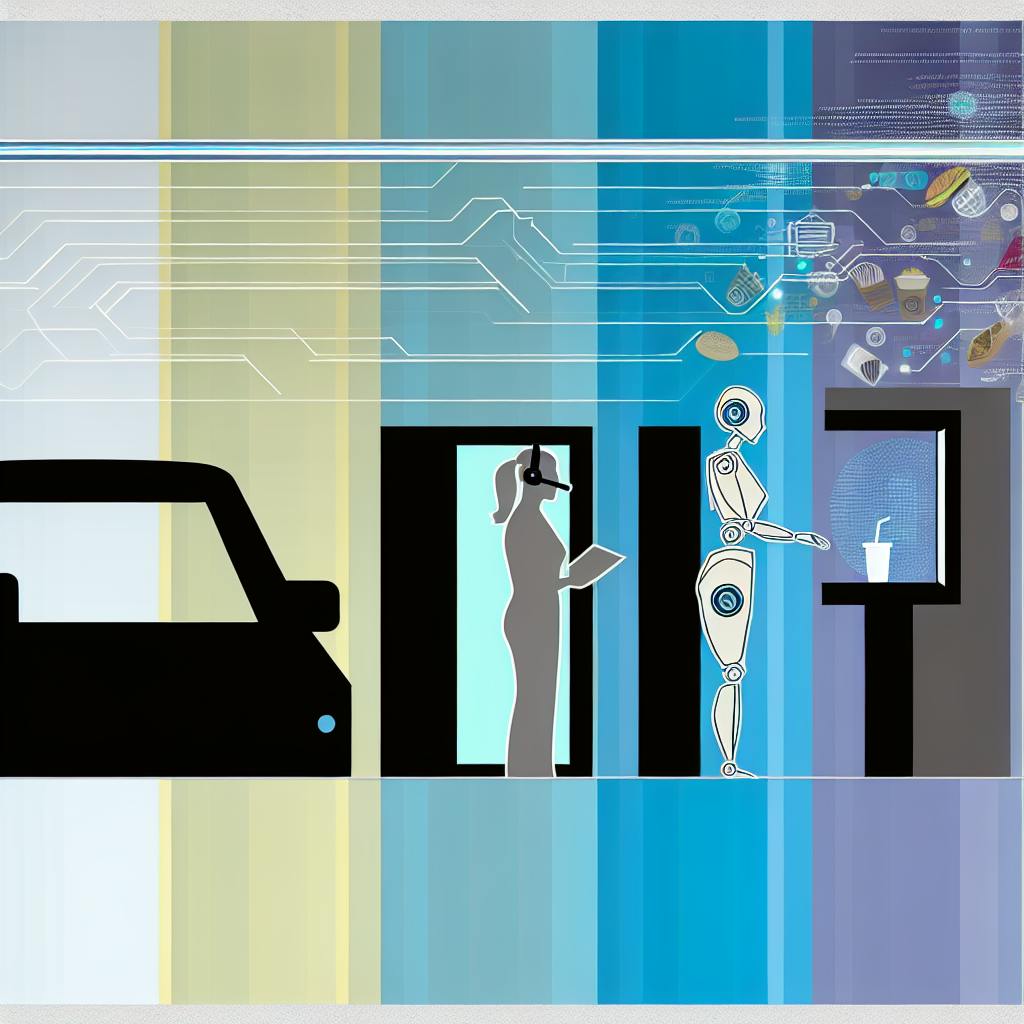July 16, 2024

Fast food ordering has changed dramatically from traditional drive-thrus to AI-driven systems. Here's a quick overview:
FeatureTraditional Drive-ThruAI-Driven SystemsOrder TakingHuman interactionAI voice assistantsSpeedSlower, manual processFaster, automatedAccuracyProne to errorsHigher accuracyPersonalizationLimitedCustomized suggestionsCostLower initial costHigher upfront investment
Key benefits of AI ordering:
Main challenges:
While AI ordering systems offer significant advantages, fast food chains must carefully consider implementation to balance efficiency with customer service and employment concerns.
Drive-thrus started in the 1940s. They let people order food without leaving their cars. Here's how they worked:
This system was new and helpful, but it had problems:
Old drive-thrus often had issues with wrong orders:
ProblemCauseMiscommunicationHard to hear through speakersMisunderstandingsStaff writing orders by hand
Wrong orders meant:
Drive-thrus were good for quick food, but had downsides:
ProsConsFast serviceNot personalOrder from carNo custom suggestionsNo need to parkSame menu for everyone
The old way of ordering was okay, but it could be better. New AI systems are making big changes to how we order fast food.
AI ordering systems have made fast food even faster. They use smart computer programs to take orders quickly and correctly. For example:
FeatureBenefitAI voice assistantsTake orders faster than humansAutomated processingReduce wait timesHigh accuracyFewer mistakes in orders
White Castle's AI voice bot, Julia, can take orders with 90% accuracy without human help.
AI systems make fewer mistakes when taking orders:
This means customers are more likely to get exactly what they want.
AI makes ordering more personal:
AI FeatureCustomer BenefitChatbotsGet special offers just for youSmart suggestionsFind new foods you might likeOrder updatesKnow when your food will be ready
These changes make customers happier and more likely to come back.
Adding AI to fast food ordering can cost a lot at first, but it can save money over time:
While the start-up costs are high, many fast food places think AI will help them make more money in the long run.
AI ordering systems in fast food have both good and bad sides. Let's look at them:
Here's a table that shows the good and bad points:
Good PointsBad PointsFaster ordersCosts a lot at firstBetter for customersFewer jobsSaves moneyCan break down
Even though there are some bad points, the good points of AI ordering systems seem to be more important. But fast food places need to think carefully about using AI and try to fix any problems it might cause.
Fast food ordering has changed a lot from old drive-thrus to new AI systems. This big change has good and bad points:
Good PointsBad PointsOrders are fasterCosts a lot to set upCustomers get better serviceSome workers might lose jobsSaves money over timeCan have problems if it breaks
Even with some downsides, many fast food places think AI ordering is worth it. They believe it will help them in the long run.
As AI gets better, more fast food places will likely use it. But it's important to find a good mix between using AI and having people help. This way, customers can have a smooth and easy time ordering their food.
The main things to remember are:
AI in fast food is about using smart computer systems to make ordering and running restaurants easier. Here's what AI does in fast food:
AI FeatureWhat It DoesSmart orderingTakes orders quickly and correctlyPersonal suggestionsRecommends food based on what you likeKitchen helpMakes sure food is made fast and right
AI is helping fast food places work better and give customers what they want. It's not just a future idea - many restaurants are using AI right now to:
While AI costs a lot to set up at first, many fast food places think it will help them in the long run by making things work better and keeping customers happy.

Enter your information in the form to receive a call from Loman and place an order like a customer would!